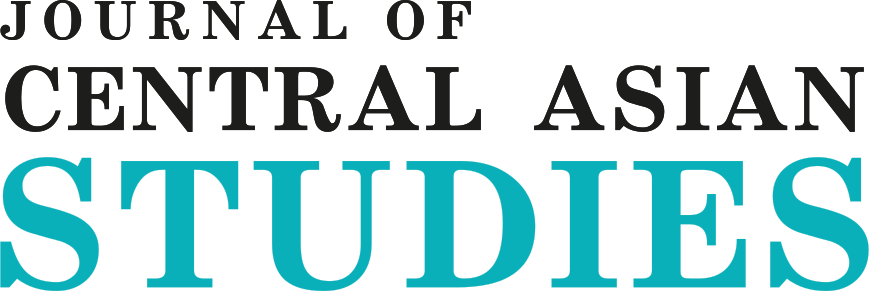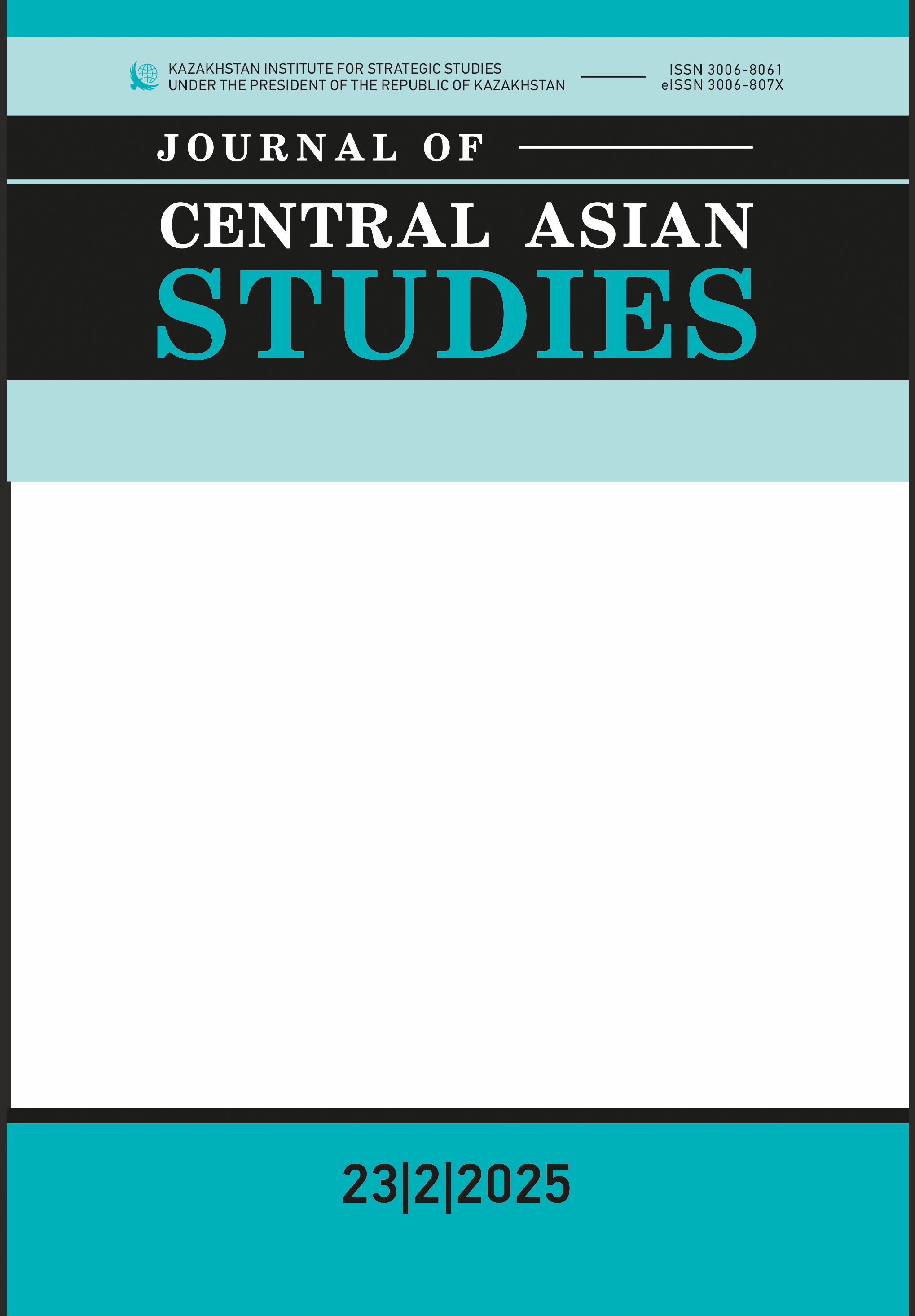The Afghan-Pakistan Borderlands and Their Impact on Pakistan’s Security
DOI:
https://doi.org/10.52536/3006-807X.2025-2.002Keywords:
Afghanistan, Pakistan, Afghan-Pakistan borderlands, violent extremism, terrorism, Tehrik-e Taliban Pakistan (TTP), Balochistan, Khyber PakhtunkhwaAbstract
The Afghanistan-Pakistan borderlands have a significant impact on the relationship between the two neighboring states, Afghanistan and Pakistan, as well as on Pakistan’s security. This border zone, known as the Durand Line, is not just a line on a map. It is the zone of interaction, conflict, negotiation, and hybridity that has become a haven for “Tehrik-e-Taliban Pakistan”, one of the extremist and terrorist organizations operating here over the past two decades. Today, Pakistan finds itself in a challenging position due to the periodic infiltration of “Tehrik-e-Taliban Pakistan” militants from Afghan territory and a renewed wave of violence in Khyber Pakhtunkhwa province, as well as in some other regions of Pakistan. The danger lies in the fact that the “Tehrik-e-Taliban Pakistan” utilizes Afghan territory to plan and execute operations within Pakistan.
The purpose of this article is to analyze how borders with cross-border ethnic, social, and economic networks are continually constructed, maintained, and contested through policies, violence, and social practices.
The theoretical framework is primarily grounded in the concept of borderlands theory and, to a lesser extent, in insurgency and counterinsurgency theories. It draws on a wide range of recent sources, highlighting the background and realities of the Afghanistan–Pakistan borderlands. The findings and insights, derived from a comparative and empirical content analysis of the Afghan-Pakistan borderlands, challenge traditional state-centric views and reveal how borderlands function as dynamic spaces of interaction, conflict, and identity negotiation.
References
Afghanistan International. (2024). TTP leaders live in Kabul, claims former Pakistani envoy. https://www.afintl.com/en/202409303924.
Akhter, M. N. (2024, August 30). TTP and Baloch militant groups: An examination of their relationship. https://strafasia.com/ttp-and-baloch-militant-groups-an-examination-of-their-relationship/.
Ansary, T. (2020, January 22). Afghanistan’s Borderlands: Unruly, Unruled, and Central to Peace. https://www.xcept-research.org/afghanistans-borderlands-unruly-unruled-and-central-to-peace/.
Ariana News. (2023, November 20). IEA’s Inaction over Terror Activities Against Pakistan Unacceptable: Kakar. https://www.ariananews.af/ieas-inaction-over-terror-activities-against-pakistan-unacceptable-kakar/.
Bakrania, S. (2017). Cross-border Conflict Drivers and Breaks - Pakistan, Afghanistan, Iran and Iraq. (K4D Helpdesk Report) https://assets.publishing.service.gov.uk/media/598088dae5274a1704000042/K4D_ HDR_Cross-Border_Conflict_Drivers_PK-AF-IR-IQ.pdf.
Basit, A. (2023, July 11). Questions Surround Pakistani Taliban’s Inroads into Balochistan: Organizational Expansion or Propaganda Stunt? https://jamestown.org/program/questions-surround-pakistani-talibans-inroads-into-balochistan-organizational-expansion-or-propaganda-stunt/.
Baud, M., & Schendel, W. (1997). Towards a Comparative History of Borderlands. Journal of World History, 8(2), 211-215.
BBC News (2021). Afghanistan: What Was Left Behind by US Forces? https://www.bbc.com/news/world-58393763.
Deleixhe, M., Dembinska, M., & Iglesias, J. (2019). Securitized Borderlands. Journal of Borderland Studies, 34(5), 639-647.
Farley, R. (2021). Republicans Inflate Cost of Taliban-Seized U.S. Military Equipment. https://www.factcheck.org/2021/09/republicans-inflate-cost-of-taliban-seized-u-s-military-equipment/.
Global Terrorism Index 2025 (2025). Institute for Economics and Peace. https://reliefweb.int/report/world/global-terrorism-index-2025.
Gohel, S.M. (2023). Prevention of Cross-Border Movements of Terrorists: Operational, Political, Institutional and Strategic Challenges for National and Regional Border Controls. https://www.icct.nl/sites/default/files/2023-01/Chapter-15-Handbook.pdf.
Inayatullah, S. (2024). Pakistan: Deadly Clash Erupts Between Tribes in Kurram. https://www.dw.com/en/pakistan-deadly-clash-erupts-between-tribes-in-kurram/a-70478916.
Janjua, R., Khan, M., Shaikh, S., Khan, F., & Naseem, N. (2024). Recrudescence of TTP violence: its causes and possible remedies (p. 71). Islamabad Policy Research Institute.
Jermalavičius, T. (2007). Global War on Terrorism: Rediscovering the Insurgency and Counterinsurgency Theory. Lithuanian Annual Strategic Review, 5(1), 27-44. https://doi.org/10.47459/lasr.2007.5.2.
Mohanty, T.R. (2024). Afghanistan-Pakistan: Simmering Borders – Analysis. https://www.eurasiareview.com/24092024-afghanistan-pakistan-simmering-borders-analysis/.
Niaz, T. (2024, May 25). Poverty rate increases in Pakistan. https://www.nation.com.pk/25-May-2024/poverty-rate-increases-in-pakistan-from-38-6pc-to-39-5pc-in-five-years-pide#:~:text=According%20to%20the%20data%2070, and%2045%20percent%20in%20Sindh.
Pandya, P., & Shah, Z. (2024). Militants thrive amid political instability in Pakistan. https://acleddata.com/conflict-watchlist-2025/pakistan/.
Samaa-News. (2024). Pakistan’s border security advances with 98% fencing completion. https://www.samaa.tv/2087326336-pakistan-s-border-security-advances-with-98-fencing-completion.
Shaikh, F. (2024). Why brute force will not end Pakistan’s Balochistan insurgency. https://www.chathamhouse.org/2024/09/why-brute-force-will-not-end-pakistans-balochistan-insurgency.
Siddique, Q. (2010). Tehrik-E-Taliban Pakistan: An Attempt to Deconstruct the Umbrella Organization and the Reasons for its Growth in Pakistan’s North-West. (Report No. 12). Danish Institute for International Studies. www.files.ethz.ch/isn/125545/RP2010-12-Tehrik-e-Taliban_web.pdf.
Tariq, M. (2018). Afghanistan's insurgency and its implications for Pakistan's security (Doctoral dissertation), Mardan, Khyber Pakhtunkhwa, Pakistan, 55-65.
Tariq, M., Khan, A., & Khan, B. (2020). The Borderland Theory in the Context of Pak-Afghan Border. Sir Syed Journal of Education and Social Research, 3(1), 195-202.
Wermuth, M., & Riley, K. (2007). The Strategic Challenge of Border Security. www.rand.org/content/dam/rand/pubs/testimonies/2007/RAND_CT275.pdf.
Ur Rehman, Z. (2023). Pakistani Taliban move into new territories. https://www.dw.com/en/pakistani-taliban-move-into-new-territories/a-65503987.
Downloads
Published
Issue
Section
License
Copyright (c) 2025 Assanbayev M., Talha M., Murtaza M.

This work is licensed under a Creative Commons Attribution 4.0 International License.











 Open content is licensed under the CC-BY
Open content is licensed under the CC-BY 